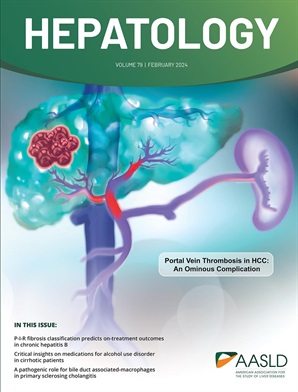半乳糖凝集素-1通过gm1 -半乳糖依赖途径调节糖酵解,促进肝细胞癌的高热抵抗。
IF 12.9
1区 医学
Q1 GASTROENTEROLOGY & HEPATOLOGY
引用次数: 0
摘要
背景和目的热消融是治疗早期不可切除肝细胞癌(HCC)的标准治疗方式,但持久的疗效有限——在治疗后监测中,高达40%的HCC患者最终出现局部复发。虽然热消融已被证实会导致热消融区中心的细胞立即死亡,但其对消融周围区域的代谢影响尚不清楚。我们旨在阐明半乳糖凝集素-1 (Gal-1)促进肝细胞癌热消融诱导的高热抵抗的代谢机制,并在体内证明抑制Gal-1联合热消融的治疗潜力。方法和结果采用非靶向方法对热消融应答者(n=32)和无应答者(n=23)的消融前福尔马林固定石蜡包埋(FFPE)活检标本进行蛋白质组学分析。与应答者相比,Gal-1在热消融无应答者中过度表达。此外,Gal-1过表达的HCC在体外表现出对高温的敏感性降低,在高温诱导的应激下糖酵解和下游TCA循环的利用增加。过表达gal -1的HCC通过gal -1促进gm1神经节苷脂分解,产生半乳糖,增加糖酵解的代谢流量,从而增加下游TCA循环,从而提高其代谢利用。体内研究表明,与单药热消融或单独抑制Gal-1相比,抑制Gal-1联合热消融可显著减小肿瘤大小。结论sgal -1可介导肝细胞癌的热抵抗,并可作为抑制肝细胞癌热消融后快速进展的治疗靶点。本文章由计算机程序翻译,如有差异,请以英文原文为准。
Galectin-1 modulates glycolysis via a GM1-galactose-dependent pathway to promote hyperthermia resistance in hepatocellular carcinoma.
BACKGROUND AND AIMS
Thermal ablation is the standard of care treatment modality with curative intent for early-stage non-resectable hepatocellular carcinoma (HCC), but a durable response is limited-with up to 40% of HCC patients eventually experiencing local recurrence on post-treatment surveillance. While thermal ablation has been established to cause immediate cell death in the center of the thermal ablation zone, its metabolic impact in the peri-ablational region remains unclear. We aimed to elucidate the metabolic mechanism by which Galectin-1 (Gal-1) promotes thermal-ablation-induced hyperthermia resistance in HCC and demonstrate the therapeutic potential of inhibiting Gal-1 in combination with thermal ablation in vivo.
APPROACH AND RESULTS
Proteomic analysis was performed using an untargeted approach on pre-ablation formalin-fixed paraffin-embedded (FFPE) biopsy specimens of thermal ablation responders (n=32) and nonresponders (n=23). Gal-1 was found to be overexpressed in thermal ablation nonresponders compared to responders. Moreover, HCC with Gal-1 overexpression demonstrated reduced sensitivity to hyperthermia in vitro and increased utilization of glycolysis and downstream TCA cycle under hyperthermia-induced stress. Gal-1-overexpressing HCC enhanced its metabolic utilization through Gal-1-facilitated GM1-ganglioside breakdown, producing galactose to increase the metabolic influxes into glycolysis and consequently the downstream TCA cycle. In vivo studies showed that inhibiting Gal-1 in combination with thermal ablation significantly reduced tumor size compared to either monotherapy thermal ablation or Gal-1 inhibition alone.
CONCLUSIONS
Gal-1 can mediate hyperthermia resistance in HCC and can potentially be modulated as a therapeutic target to reduce rapid progression after thermal ablation.
求助全文
通过发布文献求助,成功后即可免费获取论文全文。
去求助
来源期刊

Hepatology
医学-胃肠肝病学
CiteScore
27.50
自引率
3.70%
发文量
609
审稿时长
1 months
期刊介绍:
HEPATOLOGY is recognized as the leading publication in the field of liver disease. It features original, peer-reviewed articles covering various aspects of liver structure, function, and disease. The journal's distinguished Editorial Board carefully selects the best articles each month, focusing on topics including immunology, chronic hepatitis, viral hepatitis, cirrhosis, genetic and metabolic liver diseases, liver cancer, and drug metabolism.
 求助内容:
求助内容: 应助结果提醒方式:
应助结果提醒方式:


